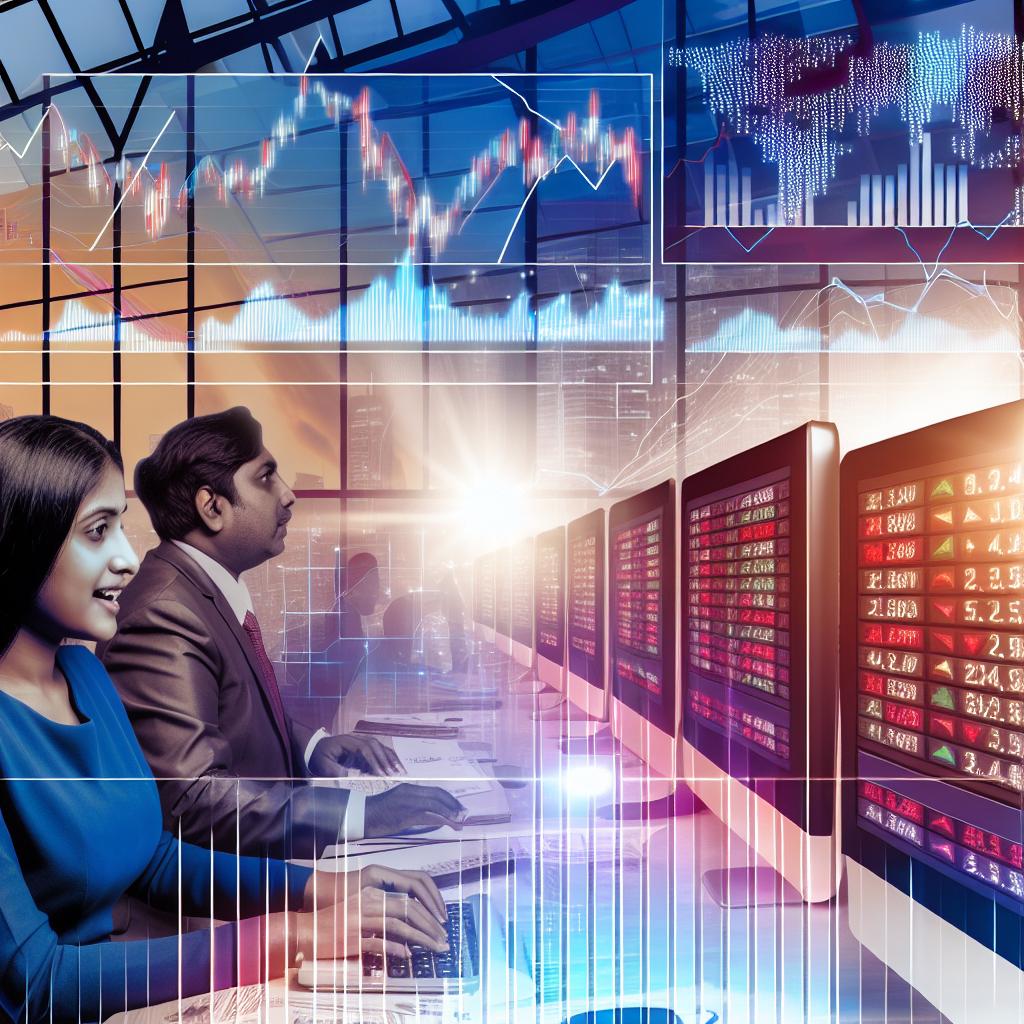How to Read Stock Tickers and Market Data
Understanding Stock Tickers
Stock tickers serve as the unique identifiers for securities within the trading world. These symbols are far more than just a random combination of letters; they hold significant meaning and are critical for market participants in identifying and tracking companies. Typically, stock tickers consist of one to four letters and are prominently used across the world’s stock exchanges to represent various companies. For example, Apple Inc. is represented by the ticker AAPL, while Amazon.com, Inc. uses the ticker AMZN.
These symbols not only distinguish companies but can also convey important information about the company’s status. For instance, in the U.S. market, when a stock symbol ends with the letter ‘Q’, such as ABCDQ, it signals that the company is undergoing bankruptcy proceedings. This provides immediate insight into the financial condition of the company, which is vital for investors making critical decisions.
Elements of Market Data
Market data is a term that encompasses the plethora of information necessary for investors to make well-informed decisions. This data is composed of several key elements that together provide an in-depth view of the market’s functionality and performance:
Price: The quoted price is a reflection of what the most recent buyer paid for a share of the stock or security. This number offers investors a real-time glimpse into the perceived value of the asset at that particular moment in the marketplace. Tracking price changes is fundamental for both short-term traders looking to capitalize on volatility and long-term investors who focus on broader trends.
Volume: This data point indicates how many shares or contracts have been traded within a specified timeframe, such as an hour, day, or week. High volume often signals a strong interest in the security, which may be driven by factors such as news releases, earnings announcements, or broader economic indicators. Conversely, low volume might signal a lack of investor interest or market stability.
Bid and Ask: These terms describe the price dynamics between buyers and sellers. The bid is the highest price at which a buyer is prepared to purchase a stock, while the ask is the lowest price a seller is willing to accept. The difference between these two prices is known as the spread, and it plays a vital role in determining the liquidity and volatility of a stock. A narrower spread can suggest a more liquid market, while a wider spread may indicate less liquidity and higher volatility.
Open, High, Low, and Close (OHLC): These metrics provide a comprehensive view of a security’s price movements within a specific trading session. The open price reflects the first trade of the day, the high is the highest price reached, the low is the lowest price touched, and the close represents the last transaction completed before the market closes. Understanding these figures allows investors to track price trends and volatility over specific timeframes.
Reading Stock Quotes
For investors, being able to interpret stock quotes is an essential skill. Stock quotes typically include OHLC data, volume, and bid and ask prices. Often, they also display the percentage change from the previous day’s closing price, giving a quick indication of how the stock is performing relative to its recent history. This snapshot helps investors track performances and identify potential trading opportunities.
Moreover, understanding stock quotes provides insight into the overall sentiment of the market about a particular security. For instance, a significant increase in volume coupled with a price jump might indicate positive investor sentiments or recent good news about the company. On the other hand, declining prices and volumes could signal caution among investors or unfavorable news.
The Role of Market Indexes
Market indexes are indispensable tools for assessing the collective movements of stocks and gauging the health of financial markets. They are essentially aggregations of selected stocks, which provide a snapshot of a segment of the economy or the market as a whole. Important indexes like the S&P 500, which comprises 500 of the largest U.S. companies, serve as a benchmark to evaluate the performance of individual stocks or entire industries against the broader market.
Index movements can reflect investor confidence or caution about economic conditions, thereby offering valuable insights. For example, a rising market index usually indicates that the underlying companies in the index are performing well, leading to increased investor confidence. Conversely, a declining index can signal broader economic challenges or uncertainties. Understanding these signals through indexes allows investors to allocate their resources more effectively, balancing risk and opportunity.
Conclusion
In traversing the financial landscape, gaining a solid grasp of key market concepts such as stock tickers, market data, and indexes is of utmost importance. Stock tickers act as the identifiers for companies in the market, while market data provides the quantitative information essential for analysis. Meanwhile, indexes serve to benchmark performance and indicate market trends. An astute investor leverages this knowledge to make informed investment decisions and to keep pace with market dynamics. Continued education and the utilization of platforms offering real-time market data and analytics can further enhance one’s understanding and adaptability in the ever-evolving financial markets.
This article was last updated on: March 31, 2025




